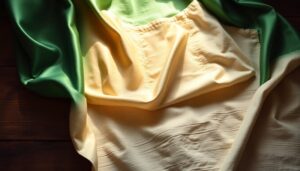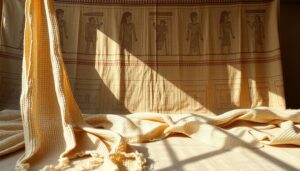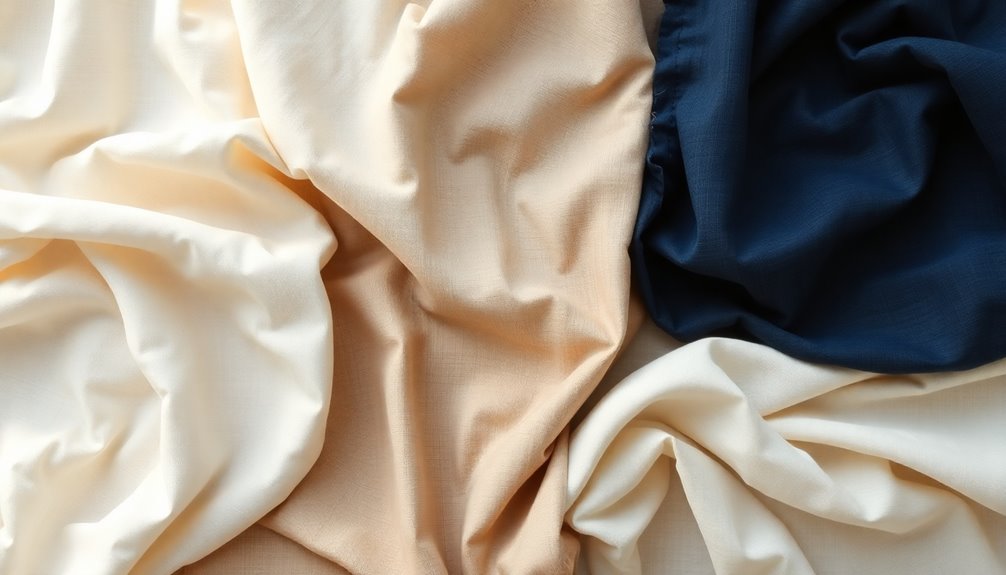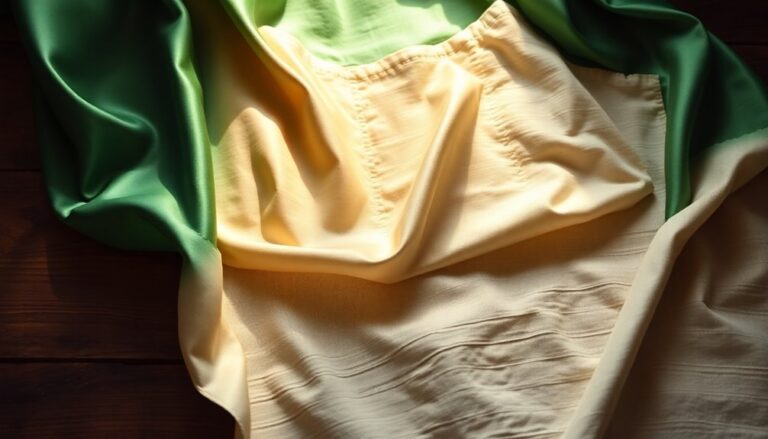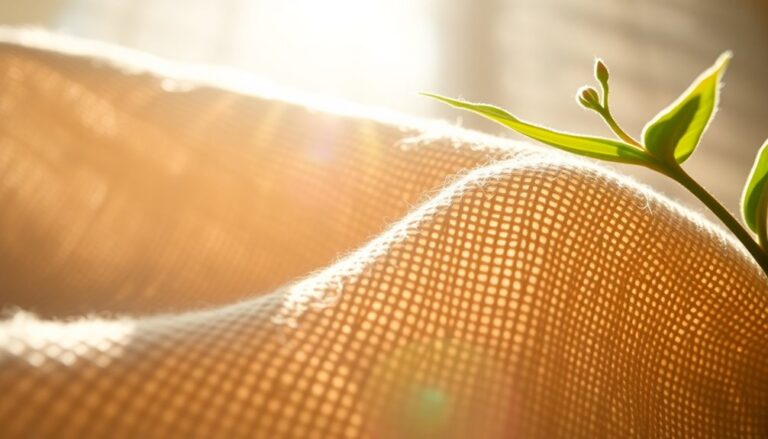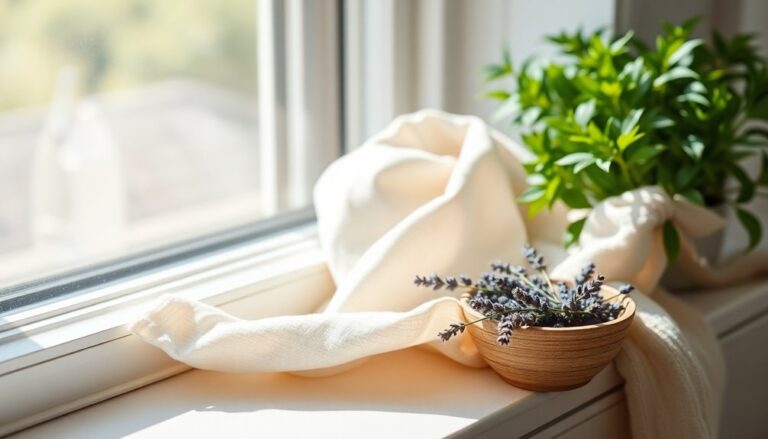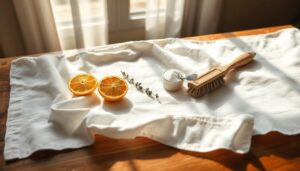There are several types of linen fabric, each differing in texture and application. Plain weave linen is versatile and strong, whereas sateen linen offers a shiny, luxurious finish. Twill linen features a diagonal weave for added durability, making it ideal for home décor and apparel. Linen blends combine linen's properties with other fibers for improved comfort and color vibrancy. Raw linen showcases natural, eco-friendly qualities with a coarse texture. There's so much more to uncover about these fabrics.
Article Highlights
- Plain Weave Linen is versatile, durable, and breathable, suitable for clothing and home textiles with a timeless aesthetic.
- Sateen Linen features a smooth, shiny surface and is ideal for high-end bed linens and elegant tablecloths.
- Twill Linen has a distinctive diagonal weave, offering enhanced durability and is commonly used for home décor and apparel.
- Linen Blends combine linen with other fibers for improved softness, wrinkle resistance, and vibrant color retention.
- Raw Linen is eco-friendly with a coarse texture, showcasing breathability and durability, making it perfect for sustainable clothing and décor.
Plain Weave Linen
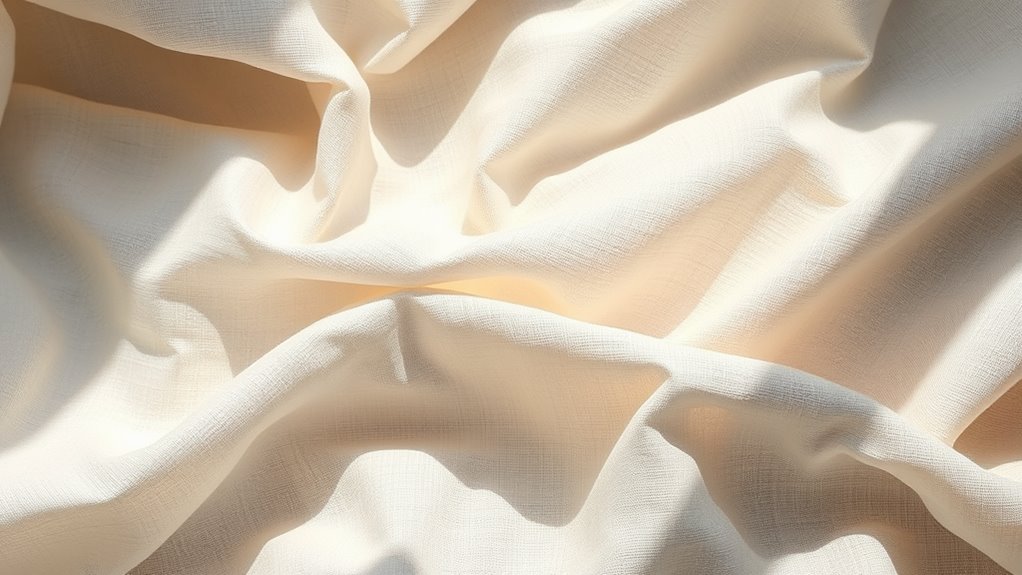
Plain weave linen is one of the most basic yet versatile types of linen fabric. Its plain weave characteristics include a simple over-and-under pattern, which results in a strong, durable texture. This construction allows the fabric to breathe, making it comfortable for various climates. Moreover, plain weave linen has a smooth surface, providing a timeless aesthetic that appeals to many. The fabric's versatility leads to numerous plain weave applications, such as clothing, home textiles, and upholstery. From casual summer dresses to elegant table linens, plain weave linen adapts well to different styles and uses. Its natural fibers likewise contribute to sustainability, making it a popular choice among eco-conscious consumers. Overall, plain weave linen remains a staple in the textile world.
Sateen Linen
Whereas many may associate linen with a rustic aesthetic, sateen linen offers a luxurious twist on this classic fabric. Known for its smooth, shiny surface, sateen linen characteristics include a soft feel and a more refined appearance compared to traditional linen. This elegant finish is achieved through a special weaving technique that creates a beautiful drape.
| Sateen Linen Characteristics | Sateen Linen Uses |
|---|---|
| Soft and smooth texture | High-end bed linens |
| Lustrous finish | Elegant tablecloths |
| Durable and breathable | Stylish clothing options |
With its versatility, sateen linen is perfect for creating sophisticated home decor and fashionable garments. Its luxurious appeal makes it an excellent choice for those looking to enhance their style.
Twill Linen
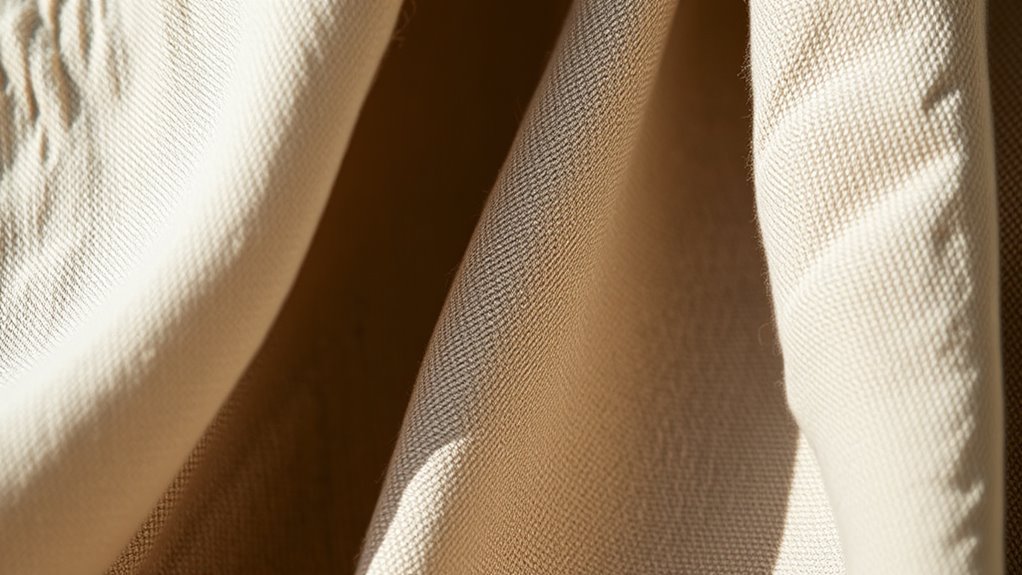
Sateen linen's luxurious appeal contrasts with the more rugged charm of twill linen, which brings its own unique qualities to the table. Twill linen characteristics include a diagonal weave that gives it a distinctive texture and improved durability. This type of linen is often heavier than other varieties, making it ideal for items that require strength and resilience. Twill linen uses range from home décor, such as tablecloths and curtains, to apparel like jackets and trousers, where its sturdy nature holds up well over time. Furthermore, the fabric's breathable properties guarantee comfort in various climates. Overall, twill linen is a versatile option that combines practicality with a unique aesthetic, appealing to those who appreciate both function and style.
Linen Blends
What makes linen blends so appealing to fabric lovers? Linen blends combine the best of both worlds, merging the desirable linen fabric characteristics with other fibers. This results in fabrics that are not just breathable and durable but likewise more versatile. Here are some key benefits of linen blends:
- Improved softness and comfort
- Increased wrinkle resistance
- Greater color retention and vibrancy
- Improved drape and flow
Raw Linen
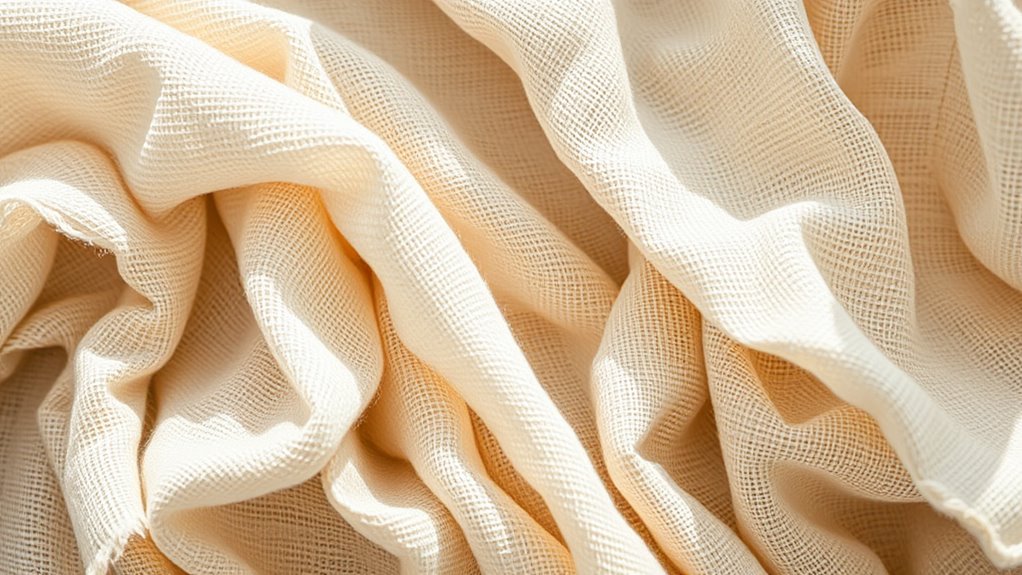
Although many appreciate the refined qualities of linen blends, raw linen holds its own unique charm. This fabric showcases the inherent linen properties, such as breathability and moisture-wicking, making it ideal for warm climates. Its texture is slightly coarse, providing an authentic feel that many find appealing. Additionally, raw linen demonstrates remarkable linen durability, often lasting for years with proper care.
| Feature | Description | Benefits |
|---|---|---|
| Breathability | Allows air circulation | Keeps the body cool |
| Moisture-wicking | Absorbs and releases moisture | Reduces discomfort |
| Eco-friendly | Made from natural fibers | Sustainable choice |
| Versatility | Suitable for clothing and decor | Adaptable for various uses |
| Timeless appeal | Classic, rustic look | Adds character to items |
Frequently Asked Questions
How Does Linen Fabric Compare to Cotton in Durability?
When examining linen durability comparison to cotton, it's clear that linen tends to outlast cotton. Whereas both fabrics are strong, linen's fibers are more resilient, allowing it to withstand wear and tear better over time. Cotton fabric longevity, even though notable, doesn't quite match up to linen's durability, particularly in heavy-use situations. Overall, those seeking a long-lasting option might find linen to be the preferable choice for durability and strength in their textiles.
Can Linen Fabric Be Machine Washed?
Many people don't realize that over 70% of linen fabrics can be machine washed. In terms of caring for linen, it is crucial to follow specific washing tips. Most experts recommend using a gentle cycle with cold water to maintain the fabric's integrity. Furthermore, following care instructions, like avoiding bleach and tumble drying, can help preserve linen's natural beauty and durability, ensuring it stays in great shape for years to come.
Is Linen Hypoallergenic for Sensitive Skin?
In terms of sensitive skin, linen's benefits are remarkable. It's a breathable, natural fabric that's less likely to irritate skin compared to synthetic options. Many people find that linen's moisture-wicking properties help keep them comfortable, reducing the risk of rashes or allergies. Though individual reactions can vary, it's typically considered hypoallergenic, making it a suitable choice for those with sensitivities. So, for sensitive skin, linen could be a great option.
How Can I Remove Wrinkles From Linen Fabric?
When faced with linen that resembles a crumpled napkin after a wild dinner party, one might wonder how to restore its dignity. Fear not; steam ironing is the knight in shining armor for such fabric care dilemmas. By gently steaming the wrinkles away, one can transform that chaotic mess into a smooth masterpiece. With a little patience and the right technique, linen can reclaim its rightful place as the elegant fabric it once was.
What Are the Best Uses for Linen in Home Decor?
In terms of home decor, linen's versatility shines. It's perfect for various curtain styles, offering an elegant yet relaxed look that improves any room. Furthermore, table linens made from linen add a touch of sophistication to dining experiences, making meals feel special. Linen's breathability and natural texture make it an ideal choice for both functional and decorative uses, ensuring comfort and style throughout the home.

